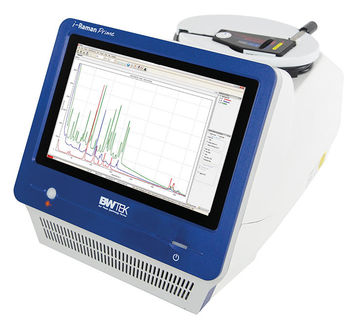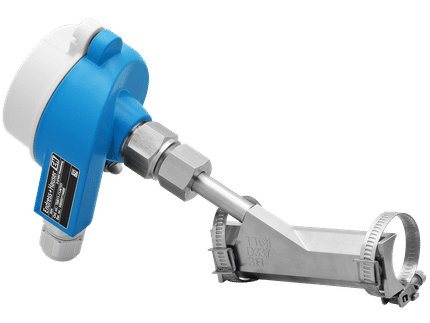Aurora kinases regulate cell cycle transit from G2 through cytokinesis and, thus, are targets in cancer therapy[1]. There are three mammalian aurora kinase genes, encoding aurora A, B and C. Intense investigation has focused on aurora A and B as they appear to play a role in oncogenesis[2] with aurora A identified as a low penetrance tumor susceptibility gene in mice and humans[3]. Aurora kinases could be potential targets for novel small-molecule enzyme inhibitors.
Drug development
A new approach to inhibiting cancer growth that shows great promise for structure-based drug development is targeting enzymes central to cellular mitosis[4]. Aurora kinases, so named because the scattered mitotic spindles generated by mutant forms resemble the Aurora Borealis, have gained a great deal of attention as possible anticancer drug targets[5][6]. The Aurora enzymes are particularly exciting because they are involved in a direct path to the nucleosome by phosphorylating histone H3[7][8]. Furthermore, Aurora kinases are known to be oncogenic and overexpressed in various forms of cancerous growth, including leukemia, colon cancer, prostate cancer[9] and breast cancer[10] tumors[11]. So far three Aurora-kinase inhibitors have been described: ZM447439[12], Hesperadin[13][14] and VX-680. The last is in advanced stages (Phase II clinical trial) of a joint drug development by Vertex Pharmaceuticals's VX-680 (Sausville, 234, last posted on 12/18/06) and Merck & Co.[15].
Vinca Alkaloids
Vinca alkaloids, including the natural products vincristine and vinblastine and the semisynthetic derivatives vindesine and vinorelbine, are antimitotic drugs that are widely used in cancer treatment[16].
Aurora structure
The structure and active site of Aurora-2-adenosine complex has been determined[17]. The hinge (yellow), glycine-rich loop (blue), and activation loop (red) are key features of the protein kinase fold involved in binding adenosine. The protein backbone atoms of residues Glu-211, Ala-213 in the hinge region of Aurora-2, and the sidechain of residue Trp-277, located in the activation loop, bind adenosine through specific hydrogen bonds. There are no hydrogen bonds between the 2'-OH or 3'-OH groups of the ribose moiety and Aurora-2. Residues Lys-162 and Asp-274 are essential for Aurora-2 kinase activity but do not hydrogen bond to each other as seen in crystal structures of several other protein kinases.
See also
References
- ^ Andrews PD, Knatko E, Moore WJ, Swedlow JR. Mitotic mechanics: the auroras come into view. Current Opin in Cell Biol.(2003) 15: pp.672-83
- ^ Katayama H., Brinkley WR, Sen S. The Aurora kinases: Role in cell transformation and tumorigenesis. Cancer and Metastasis Reviews (2003) 22(4): pp.451-64
- ^ Ewart-Toland A, Briassoului P, de Koning JP et al, Identification of Stk6/STK15 as a candidate low-penetrance tumor susceptibility gene in mouse and human. Nature Genetics (2003) 34(4): pp.403-12
- ^ Nigg E.A. Mitotic kinases as regulators of cell division and its checkpoints Nat. Rev. Mol. Cell Biol. 2:21-32 (2001)
- ^ Nicholas Keen & Stephen Taylor, Aurora-kinase inhibitors as anticancer agents. Nature Reviews Cancer 4, 927-36 (2004)
- ^ Richard D. Carvajal, Archie Tse, and Gary K. Schwartz Aurora Kinases: New Targets for Cancer Therapy Clin. Cancer Res., (2006) 12: pp.6869-75.
- ^ H Goto, Y Yasui, EA Nigg, and M Inagaki Aurora-B phosphorylates Histone H3 at serine28 with regard to the mitotic chromosome condensation Genes Cells, (2002) 7: pp11-7
- ^ Karine Monier, Sandrine Mouradian, and Kevin F. Sullivan DNA methylation promotes Aurora-B-driven phosphorylation of histone H3 in chromosomal subdomain J. Cell Sci., (2007) 120: pp.101-14
- ^ Edmund Chun Yu Lee et al., Targeting Aurora Kinases for the Treatment of Prostate Cancer. Cancer Res. (2006) 66: pp.4996-5002.
- ^ Hua Yang et al., Aurora-A Kinase Regulates Telomerase Activity through c-Myc in Human Ovarian and Breast Epithelial Cells Cancer Res. (2004) 64: pp.463-67.
- ^ Jingyan Fu, Minglei Bian, Qing Jiang, and Chuanmao Zhang Roles of Aurora Kinases in Mitosis and Tumorigenesis Mol. Cancer Res., (2007) 5: pp.1-10.
- ^ Bedrick B. Gadea and Joan V. Ruderman Aurora Kinase Inhibitor ZM447439 Blocks Chromosome-induced Spindle Assembly, the Completion of Chromosome Condensation, and the Establishment of the Spindle Integrity Checkpoint in Xenopus Egg Extracts Mol. Biol. Cell, (2005) 16: pp.1305-18.
- ^ Hauf, S. et al. The small molecule Hesperadin reveals a role for Aurora B in correcting kinetochore-microtubule attachment and in maintaining the spindle assembly checkpoint. J. Cell Biol. (2003) 161, pp.281–94
- ^ Shiho Sakita-Suto et al., Aurora-B Regulates RNA Methyltransferase NSUN2 Mol. Biol. Cell, (2007) 18: pp.1107 17
- ^ Harrington, E. A. et al. VX-680, a potent and selective small molecule inhibitor of the Aurora kinases, suppresses tumor growth in vivo. Nature Med. 10, 262–7 (2004)
- ^ Donehower RC and Rowinsky EK (1993) Anticancer drugs derived from plants, in Cancer: Principles and Practice of Oncology (De Vita VT, Hellman S, and Rosenberg SA editors) pp 409–417, JB Lippincott, Philadelphia
- ^ Graham M. T. et al., Crystal Structure of Aurora-2, an Oncogenic Serine/Threonine Kinase J. Biol. Chem., (2002) 277: pp.42419-22
| Phosphotransferases/kinases (EC 2.7) |
|---|
| 2.7.1 - OH acceptor | Hexo- - Gluco- - Fructo- (Hepatic fructo-) - Galacto- - Phosphofructo- (1, 2) - Thymidine - NAD+ - Glycerol - Pantothenate - Mevalonate - Pyruvate - Deoxycytidine - PFP - Diacylglycerol - Bruton's tyrosine - Phosphoinositide 3 (Class I PI 3, Class II PI 3) - Sphingosine |
|---|
| 2.7.2 - COOH acceptor | Phosphoglycerate - Aspartate |
|---|
| 2.7.3 - N acceptor | Creatine |
|---|
| 2.7.4 - PO4 acceptor | Phosphomevalonate - Adenylate - Nucleoside-diphosphate |
|---|
| 2.7.6 - P2O7 | Ribose-phosphate diphosphokinase - Thiamine pyrophosphokinase |
|---|
| 2.7.7 - nucleotidyl- | Integrase - PNPase - Polymerase - RNase PH - UDP-glucose pyrophosphorylase - Galactose-1-phosphate uridylyltransferase -Terminal deoxynucleotidyl transferase - RNA replicase - Reverse transcriptase (Telomerase) - Transposase |
|---|
| 2.7.8 - other phos. | N-acetylglucosamine-1-phosphate transferase |
|---|
| 2.7.10-11 - protein | Tyrosine - Serine/threonine-specific |
|---|
|







